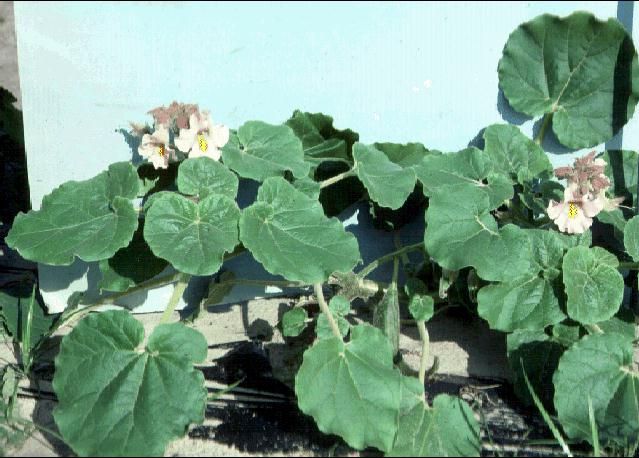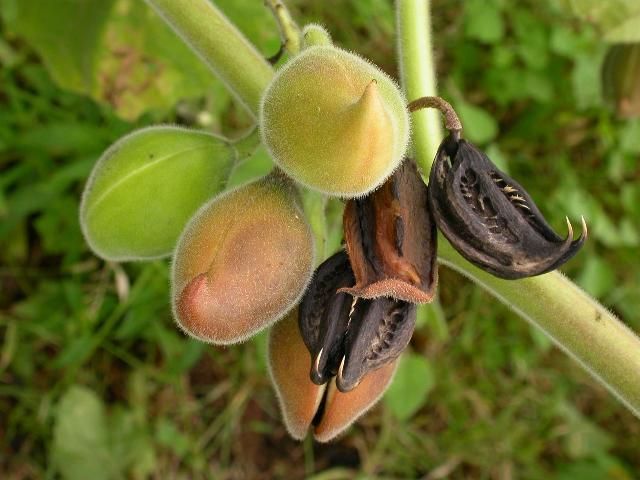Martynia—Proboscidea louisianica (Mill.) Thell.1
Martynia, popularly called unicorn plant, is grown for its seed pods that are picked while young and tender and used for pickles, like cucumbers. Both the generic name Proboscidea (nose-like) and the popular name unicorn plant refer to the configuration of the pods. These fruits are hairy, about 1-inch thick and 4 to 6 inches long at maturity, about half the length consisting of a slender, curved beak. The pods become very hard when dried.

Credit: UF/IFAS
Description
The plant is an annual, up to 2 to 3 feet in height, with large, 4 to 12 inch wide, round, slightly pointed leaves. Because of the unusual shape of the pods, and the pretty, orchid-like, lavender flowers, the plants are grown as ornamentals and for floral arrangements, as well as for pickling.

Credit: Marco Schmidt, CC BY-SA 2.5
Culture
Martynia is native to the southwestern United States and occasionally is grown in home gardens throughout the country. Florida gardeners wishing to try this as a novelty plant should look through their seed catalogs for a listing.
The cultural requirements for martynia are about the same as for okra. Like okra, it does best in a warm sunny location, for it is a hot weather plant. It may be started in the garden either by direct seeding or by setting out transplants. For transplants, sow seeds in individual transplant containers, or in an outdoor seed bed. Keep as much soil as possible around the roots when transferring the plants from the seed bed to the garden row.
In the garden, space plants 3 feet between rows and 18 to 24 inches between plants. Sow the seeds ½ to 1 inch deep and thin young seedlings to the desired distance.
Except in south Florida, start plants outdoors in the spring as soon as frost danger is past. In South Florida, wintertime planting is possible.
Use
Entire young pods are used for pickling. Pick the pods while still tender or they will be unfit for consumption. Continue picking pods as they develop to encourage more pods to set.


